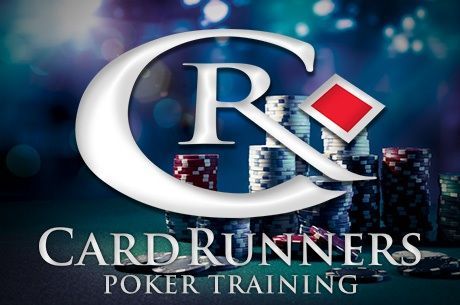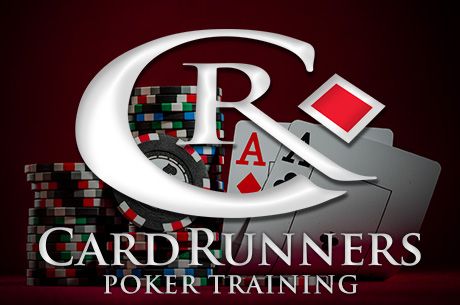Countering Aggression Early in Tournaments by Limping

You’ve probably heard or read countless times that limping is bad. The argument is a valid one as aggression typically is the best way to pick up pots. However with the hyper-aggressive tendencies of many of today’s tournament players, you can use passive preflop play early in multi-table tournaments to your benefit. This article is going to go over that strategy, its inherent weaknesses and strengths, and why limping can work if properly utilized.
The Weaknesses of Limping
Many players will say that limping is simply bad — that it’s a weak, a fishy play and should generally be avoided. There are certainly several problems with limping. Let’s take a look at some of them:
- It invites other players into the pot and playing multi-way pots postflop can be very tricky and difficult.
- You can’t build a pot with premium hands if you limp in.
- If you don’t have a premium hand with which you can raise, then you should generally fold.
- It’s hard to narrow down the ranges of your opponents’ hands when you just limp in.
- Because it’s perceived as a weak play, you’ll often find yourself facing a raise and subsequently have to decide about calling, often from out of position.
- It can also be difficult to win big pots postflop after limping, because players tend to get out of the way when a passive limper starts flinging chips into the pot.
- Some argue that if you limp in that you can’t effectively represent a hand when both you and your opponent(s) miss.
Why Limping Can Work
Now that we’ve looked at some of the reasons why limping is bad, let me explain why some of those weaknesses can be exactly why limping can be good — especially in the early stages of a MTT.
- 1. Limping keeps the pot small.
Tournament poker is about survival. When pots are getting three-bet, four-bet, and five-bet before the flop with high frequency, it bloats the size of the pot and turns postflop decisions into decisions for a significant portion of your stack. Let’s look at two contrasting examples to illustrate what I mean.
You start with 10,000 in chips and the blinds at 50/100. You have 10♠10♦ and open for a raise to 250 from the button. The big blind reraises to 600. You put in a four-bet to 1,200, and your opponent calls. There is now 2,450 in the pot. The flop comes 8♠5♣2♣ and your opponent checks to you. You bet 1,325 and he calls. The pot is now 5,100. The turn brings the 8♦, pairing the eight. Your opponent checks again and thinking your hand is best you bet for value, pushing out 2,300. Your opponent then moves all in and you have to fold, having lost nearly half your stack in one hand.
Now let’s say you have 10,000, the blinds are 50/100, and instead you limp in from late position with your 10♠10♦. The big blind raises to 325 and you call, meaning there is 700 in the pot. Again the flop comes 8♠5♣2♣ and your opponent leads out for 375. You call. He then bets 700 into the 1,450 pot after the 8♦ comes on the turn, and you call again. There is now 2,850 in the pot. Your opponent bets 1,200 on a river blank, and you call and win the pot as he turns over A♣K♣. Even if you had lost the pot you would have only lost a total of 2,600 — a significant difference than the amount you lost in the first example.
- 2. Limping makes you impossible to read.
If you limp in frequently with a wide range of hands — and that is what this strategy advocates — then your opponent will never be able to put you on a hand based on how you played it preflop. Did you limp in with suited connectors? A small pair? Big Slick? A big pair? Those are questions they’ll be asking themselves and they’ll be left guessing because all you’ve done every time you’ve played a hand is limp and/or limp-call.
- 3. Limping allows you to play more speculative hands.
Early in a tournament, playing speculative hands like suited connectors, suited aces, and the like allows you opportunities to win bigger pots due to the implied odds you are being given. You’re looking to build a stack at this stage of the tournament, and getting to see flops with hands that have the potential to win big pots is paramount to being able to do this.
How To Become a Master Limper
The strategy is fairly simple. As long as you have a stack that is deep (generally 40+ big blinds), any time you have what you deem is a playable hand you limp in. This goes for big hands like aces, kings, and AxKx as well as the speculative hands we talked about earlier. While position doesn’t matter, it should at least impact the range of hands with which you are limping. Be somewhat tighter in early position and much looser in later position (especially from the cutoff and button).
If you are faced with a raise, as long as it’s a smallish raise you should generally call to see what the flop brings. If you are faced with multiple raises, then let the strength of your hand and your read on your opponents dictate your action. But never reraise — just call. Unless of course calling is for most of your stack and you have a hand like aces or kings, in which case you might as well put it in since there’s no chance of a fold happening postflop.
This strategy isn’t for the weak of heart and it requires you to be able to play excellent postflop poker. You have to be able to bluff postflop in order to get value for the times you do hit. You also have to be able to get away from hands that might appear best but based on the situation obviously are not. This can be frustrating at times because you might have limped in with kings and have to fold to a flop raise on an ace-high board. That’s the risk you take with this strategy.
Does this strategy work? Well, you can take this lesson with a grain of salt. I have seen this strategy succeed as an excellent counter if applied properly to the hyper-aggressive tendencies of today. I have also used this strategy with excellent results prior to writing this article with a win and three second-place finishes in a two-day span. Those finishes were a direct result of the stacks I was able to build employing this strategy.
I’m sure many of you will think this is the worst strategy advice article ever written. But part of the beauty of poker is the ability to adapt and think outside the box and consider unconventional approaches. Before tossing this strategy to the curb, think about if for a moment and even give it a try once or twice. It might not be for you, but it could very well be the difference-maker you were looking for.
Get all the latest PokerNews updates on your social media outlets. Follow us on Twitter and find us on both Facebook and Google+!








